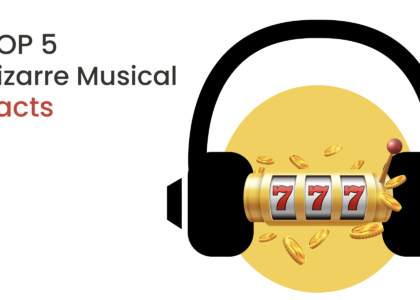Turn up the volume and get ready to experience your favorite tunes in a whole new way! If you’re a music lover and a car enthusiast, then it’s high time you upgrade your car audio system. With the right knowledge, you can transform your daily commute into a concert on wheels.
In this guide, we’ll explore the essentials of car audio systems and help you make the best choices for your vehicle. Get ready to jam out with these tips and tricks!
Table of Contents
- Why Upgrade Your Car Audio System?
- Components of a Car Audio System
- Choosing the Right Speakers
- Amplifiers: Powering Your Audio Experience
- Subwoofers: Bring the Bass
- Upgrading Your Head Unit
- Installation Tips and Tricks
- Final Thoughts
1. Why Upgrade Your Car Audio System?
A high-quality car audio system can greatly enhance your driving experience. Here are some reasons why you should consider upgrading:
- Improved sound quality: Factory-installed audio systems may not provide the best sound quality. Upgrading allows you to customize your system for a more immersive experience.
- Increased value: A well-installed audio system can increase your vehicle’s resale value, especially if it’s a sought-after feature.
- Personalization: Tailor your audio system to your taste, ensuring your favorite music sounds better than ever before.
2. Components of a Car Audio System
A typical car audio system includes the following components:
- Head unit: This is the control center of your audio system, where you select music sources, adjust volume, and manage other settings.
- Amplifier: This device boosts the audio signal from the head unit, providing more power to your speakers.
- Speakers: These convert the amplified audio signal into sound waves that you can hear.
- Subwoofer: A specialized speaker that reproduces low-frequency sounds, or bass, enhancing the overall audio experience.
3. Choosing the Right Speakers
When selecting speakers, consider these factors:
- Size: Ensure the speakers fit your car’s factory speaker locations or plan for custom installation.
- Sensitivity: Higher sensitivity speakers require less power to produce sound, making them ideal for lower-powered systems.
- Power handling: Choose speakers that can handle your amplifier’s power output, or you risk damaging them.
4. Amplifiers: Powering Your Audio Experience
An amplifier is essential for any serious car audio system. Key considerations when choosing an amplifier include:
- Power output: Match the amplifier’s power output with your speakers’ power handling capabilities.
- Number of channels: Choose a multi-channel amplifier to power multiple speakers or a mono amplifier for a subwoofer.
5. Subwoofers: Bring the Bass
Subwoofers add depth
and dimension to your music, enhancing your overall listening experience. Here’s what to look for when selecting a subwoofer:
- Size: Subwoofers come in various sizes, typically ranging from 8 to 15 inches. Larger subwoofers produce deeper bass, but also require more space and power.
- Type: You can choose between component subwoofers, which require an external enclosure and amplifier, or powered subwoofers that have a built-in amplifier and enclosure.
- Enclosure: The type of enclosure affects the subwoofer’s sound. Sealed enclosures provide tight, accurate bass, while ported or vented enclosures produce louder, more resonant bass.
6. Upgrading Your Head Unit
The head unit is the “brain” of your car audio system. When selecting a new head unit, consider these features:
- Connectivity: Look for options like Bluetooth, USB, and auxiliary inputs for seamless integration with your devices.
- Compatibility: Make sure the head unit is compatible with your vehicle’s make and model, as well as with your existing audio components.
- User interface: A user-friendly interface with intuitive controls is essential for easy operation while driving.
Pro Tip: Websites like Autozin provide a wealth of information on various car models, which can help you determine the compatibility of a head unit with your vehicle.
7. Installation Tips and Tricks
While professional installation is recommended for the best results, you can tackle a car audio system upgrade as a DIY project. Keep these tips in mind:
- Plan ahead: Sketch out your desired system and gather all necessary components and tools before starting.
- Follow instructions: Adhere to the manufacturer’s instructions for each component to ensure optimal performance and avoid damage.
- Proper wiring: Use high-quality wiring and make secure connections to avoid electrical issues.
- Test before finalizing: Test your system thoroughly before reassembling your vehicle to ensure everything works correctly.
8. Thoughts
Upgrading your car audio system can be a rewarding project that greatly enhances your driving experience. By carefully selecting components and following best practices for installation, you can create a personalized audio system that brings your favorite music to life on the road. Remember to check compatibility, choose high-quality components, and consult expert advice when needed. Happy listening!
9. Advanced Audio System Features to Consider
After mastering the basics, you may want to explore advanced features to further elevate your car audio system. Here are some additional components and technologies to consider:
- Digital Sound Processors (DSP): These devices optimize the audio signal, allowing for precise control over your system’s sound quality. With a DSP, you can fine-tune equalization, time alignment, and more to achieve the perfect sound.
- Sound deadening material: Reduce road noise and vibration by installing sound deadening material in your vehicle’s doors, floor, and trunk. This will enhance your audio system’s performance by creating a quieter, more controlled environment for your music.
- High-resolution audio: Look for a head unit and other components that support high-resolution audio formats like FLAC and DSD. This will allow you to play your favorite music in the highest possible quality.
- Satellite radio: If you’re a fan of commercial-free music, talk radio, or sports, consider adding satellite radio capabilities to your head unit. This will give you access to a wide range of programming, no matter where your travels take you.
10. Car Audio System Maintenance
To ensure the longevity of your car audio system, follow these maintenance tips:
- Keep it clean: Dust and dirt can accumulate in your car’s interior, potentially affecting the performance of your audio components. Regularly clean your head unit, speakers, and other exposed parts to keep them in top condition.
- Avoid extreme temperatures: Prolonged exposure to extreme heat or cold can damage your audio components. Park in the shade or use sunshades when possible to protect your system.
- Inspect wiring: Periodically check your system’s wiring for signs of wear, corrosion, or damage. Address any issues promptly to avoid further damage or compromised performance.
By following these recommendations and regularly maintaining your car audio system, you’ll be able to enjoy high-quality music for years to come. So, buckle up, hit the road, and let the soundtrack of your life play on!
11. Pairing Your Smartphone for Seamless Integration
In today’s connected world, integrating your smartphone with your car audio system is essential. Here are some tips for seamless smartphone integration:
- Apple CarPlay and Android Auto: Look for a head unit that supports Apple CarPlay and Android Auto, which allow you to use your phone’s apps and features through the head unit’s interface. This includes navigation, music streaming services, messaging, and more.
- Wireless connectivity: Some head units offer wireless Apple CarPlay and Android Auto connectivity, freeing you from the hassle of connecting your phone via a cable every time you enter your vehicle.
- Voice control: Many modern head units support voice control via Siri or Google Assistant, enabling you to control your audio system without taking your hands off the wheel.
12. Exploring Music Streaming Services
With a smartphone-integrated car audio system, you can access a wide range of music streaming services on the go. Here are some popular options:
- Spotify: With an extensive library of songs, playlists, and podcasts, Spotify is a top choice for many music lovers.
- Apple Music: Apple Music offers a vast collection of songs, as well as exclusive content and live radio stations.
- Tidal: For audiophiles seeking high-resolution audio, Tidal provides lossless music streaming in CD quality and higher.
- Pandora: Create personalized radio stations based on your favorite artists or songs with Pandora’s unique music discovery system.
Consider your listening preferences, budget, and device compatibility when choosing a music streaming service.
13. Car Audio System Accessories
Lastly, don’t forget to explore the world of car audio accessories, which can further enhance your listening experience:
- Remote controls: A wireless remote control allows you to adjust your audio system’s settings without reaching for the head unit, ensuring a safer drive.
- Backup cameras: Some head units support backup camera integration, which can improve safety and make parking easier.
- Dash kits: Custom dash kits enable you to seamlessly integrate your new head unit with your vehicle’s interior for a polished, professional look.
By considering these advanced features, streaming services, and accessories, you can create a truly personalized and state-of-the-art car audio system. Happy driving and enjoy the tunes!
14. Navigating Car Audio System Brands
When upgrading your car audio system, choosing the right brands is crucial. Top-tier brands offer high-quality components, reliable performance, and excellent customer support. Here are some leading car audio brands to consider:
- Alpine: Known for their innovative technology and top-notch sound quality, Alpine offers a wide range of car audio components, including head units, amplifiers, speakers, and subwoofers.
- Pioneer: Pioneer has a long-standing reputation for creating high-quality car audio products. Their extensive lineup includes head units, speakers, subwoofers, and more.
- Kenwood: With a focus on excellent sound quality and reliable performance, Kenwood is another popular choice for car audio components, including head units, amplifiers, and speakers.
- JL Audio: If you’re seeking high-performance speakers and subwoofers, JL Audio is a leading brand known for their exceptional sound quality and durability.
Don’t forget to read product reviews and consult expert recommendations to find the best components for your specific needs and budget.
15. Car Audio System Troubleshooting
Even with the best components and installation, issues can arise with your car audio system. Here are some common problems and their solutions:
- No sound: Check the head unit’s settings and connections, and make sure the speakers are properly connected to the amplifier. Ensure that the amplifier is receiving power and that all fuses are intact.
- Distorted sound: If you experience distortion, your speakers may be damaged or improperly connected. Check for loose connections or damaged speaker cones. Alternatively, the amplifier may be clipping due to insufficient power, requiring an upgrade or adjustment.
- Weak bass: If your subwoofer isn’t providing the bass you expect, check its connections and settings. You may also need to adjust the subwoofer’s enclosure or position for optimal performance.
When troubleshooting, always consult your components’ user manuals and seek professional help if necessary.
16. Embracing the Car Audio Community
Upgrading your car audio system can be an enjoyable and rewarding hobby. To get the most out of your passion, consider joining car audio forums, social media groups, or local clubs. These communities can provide valuable advice, support, and inspiration for your audio projects. Plus, you’ll have the opportunity to connect with like-minded individuals who share your enthusiasm for high-quality music on the road.
As you delve deeper into the world of car audio, don’t be afraid to experiment with different components and configurations. Continuously refine your system to achieve the perfect sound and, most importantly, have fun with the process. The open road and your favorite tunes await – enjoy the journey!





